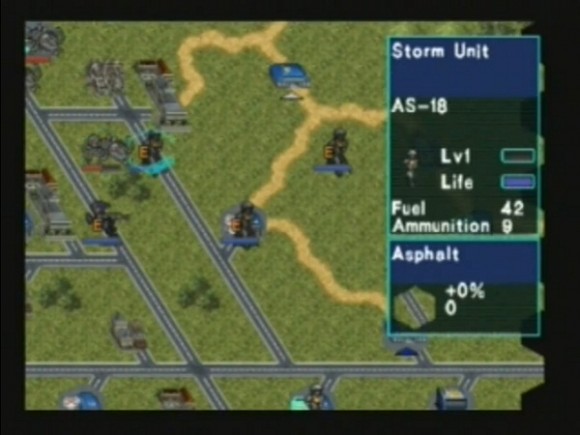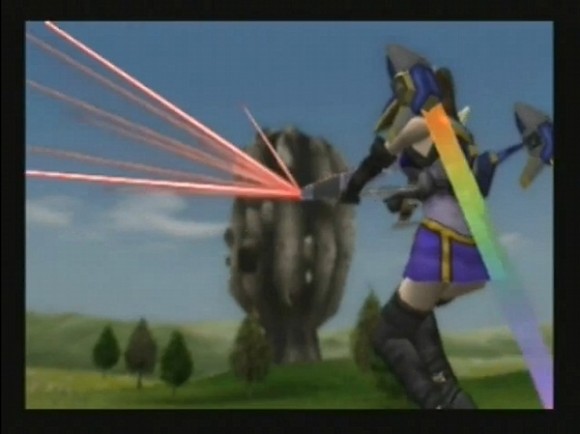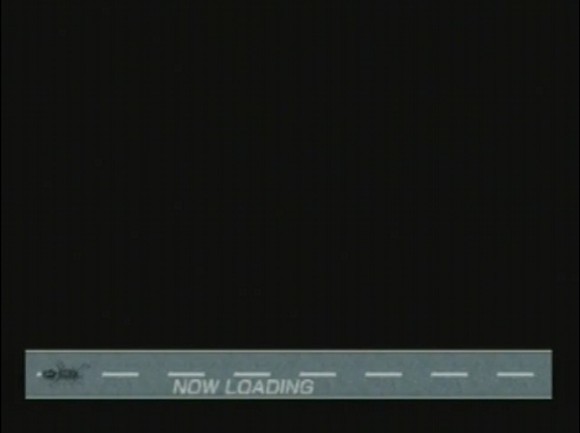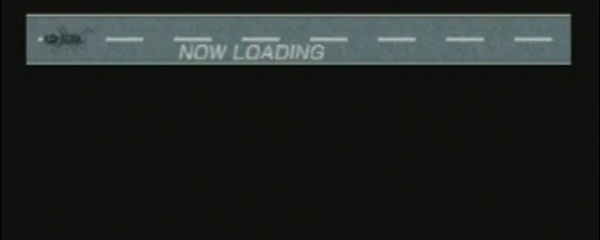One of the most bizarre things about Global Defence Force: Tactics, at least as far as I’m concerned, was discovering that it exists. It doesn’t strike me as particularly likely that a series of games known – if at this point not yet famed – for simple large-scale action-oriented gameplay would be turned into a strategy game, least of all something hex-based – the most unfashionable form of strategy game since the point in the nineties where Panzer General became a running joke amongst PC gamers who didn’t know how to play Panzer General.
On the other hand, it’s hard to deny that the concept does lend itself very nicely to a strategy game. EDFÂ has always endeavoured to present the impression of large-scale warfare; Earth and her embattled defenders against monstrous alien invaders in a global struggle for dominance and survival. Like all the best b-movies the melodrama has been upped to the point where it dwarfs even the hundred-story robots that tiny little humans find themselves pitted against.
The question, then, must be of how solid a job Global Defence Force Tactics – henceforth to be named GDFT to save my keyboard and fingers – does of presenting this conflict, as well as how well does it translate the atmosphere and presentation of its parents series into a wholly different context. But let’s begin by looking at how the game works.

The game contains approximately fifty levels of about half an hour to an hour each in its sole single-player campaign, in which you and sometimes an AI-controlled EDF commander will be pitted against one or more Ravager armies. There’s a turn limit to work against, usually about the twenty-turn mark, meaning that you’re required to play the game aggressively. Defensive ‘turtling’ strategies have no place here (a distinctive departure from the ‘run backwards and shoot’ style of many an EDF/GDFÂ level). Units gain experience as you play, increasing their abilities, and at the end of every level you unlock a selection of new weapons with which to equip them. You’re scored on your success at beating each level, with time, number of enemies killed, number of strongholds/bases captured and the size of your pre-selected army all being factors.
In each turn you move through a couple of phases: Reinforcement, in which you select five units to bring onto the battlefield from the pool of units you chose at the beginning of the mission, and the actual turn in which you move, engage in combat and capture strongholds. There are plenty of the latter and they are instrumental in allowing you to refuel, rearm and sometimes heal your units. This becomes increasingly important as you play; early missions are easygoing but soon you’ll need to ensure your stronger units are sufficiently fuelled that they can get where they need to go, that your most powerful units have enough ammunition, and that your valuable high-level units don’t get themselves killed because you over-extended yourself.
There’s not much more to it than that. As strategy games go GDFT does not have a vast amount of depth, but it remains demanding thanks to the combination of juggling fuel and ammo concerns with all-important positioning (you don’t want to leave any units out on their own, for example, or present a front line of troops vulnerable to air attack) and the rock-paper-scissors nature of unit special abilities. Numerically you tend to find yourself wildly outmatched by your opponents, but your units – at least early on – are uniformly superior; this gives you an edge but can brutally punish you if you get too cocky, kid. This does a good job of making you feel like a commander with the right tools for any given job… but if you use them badly you will be punished. GDFT does not play like a meatgrinder RTS, which for a turn-based strategy game is key.
It’s also surprisingly fluid and surprisingly compulsive – once you work past the things the manual doesn’t explain, like what happens when units run out of fuel or exactly what different strongholds do, and the occasionally lazy localization – those aren’t giant spiders, those are Gigantor Bau! Well, obviously. It’s a lot more fun to play and a lot smoother than I’ve found a lot of console strategy games to be, though I do say that as an old hand in PC gaming so I’m fairly biased. That aside I also have to note that the game by default plays four animations for every combat engagement, and there is a loading screen between every one. I really can’t sum that up any better than this, except to note that it is fun to occasionally reactivate them just so that you can visualise what the later, tougher enemy units actually look like.

There are some problems, and I admit that at the time of writing I don’t feel that I’ve seen my concerns fully play out. Still, air units – on the EDF side – seem terribly over-powered. Some are a bit more vulnerable than their ground-based counterparts, sure, but most of my successful strategies have involved large numbers of air units swarming in and decimating the enemy, who have little defence against me. Neither side has many ground units effective against air units, so ultimately the most aggressive and attentive player wins out – and that’s you, the player, because the AI in GDFT really is not up to much.
Herein lies the rub: GDFTÂ is a game made on a budget, a spin-off from a series in which AI is not a particularly important factor, from a developer who – as far as I know – haven’t made terribly many strategy games. The Ravager armies in GDFTÂ are not very bright. Their only advantage is weight of numbers, and although this can be daunting at first it’s easy enough to chip away at. Sometimes I’ve left units exposed or realised too late that a certain assault could be easily annihilated, but the AI rarely capitalises on such opportunities. Presumably it just doesn’t occur to it to do so.

Still, there’s enough challenge presented by the sheer weight of enemy numbers and the time limit that the game isn’t a cakewalk. Instead of the strategy being about outsmarting and outmanoeuvring an enemy commander, it’s about focusing on your own units: how to get them to where they need to be, which strongholds to capture to support your advance, and which units to use and when. I suspect that the game design has been deliberately based around this, with additional features like the occasional ‘ambush’ – moving a unit alongside a previously unseen enemy – presumably existing solely to throw a spanner in the works of your best-laid plans and force you to think and react on the fly.
All told GDFT is hardly an essential purchase, but between its lo-fi EDF charm, its approachability and scale, the levelling mechanics and its necessarily unusual focus – on logistics as much as tactics – it’s a fun game to spend a few hours with, particularly if you can find it cheap. It’s the epitome of a solid budget game, which is exactly what you’d expect from the Earth/Global Defence Force name.

Comments
6 responses to “Review: Global Defence Force Tactics (PS2)”
Reads to me like a more accessible version of the Daisenryaku series. Daisenryaku VII, which is available on Xbox and PS2 (the North American version is BC compatible with the X360) is one of the most brutal cock-slaps in the face that I have ever experienced.
Must pick that up again and try to play it.
From what little I've seen of the Daisenryaku series its similar to the old Battle Isle games, at least superficially. I've never played a Daisenryaku game though – sounds like I should tread softly and carry a big gun.
I think I'd like this very much. So of course it's for a different region of PS2 than the one I own.
Dammit, America! I'm planning on getting Daisenryaku, at least.
Yeah, it is a little odd that D3 never pushed the Simple series (which both GDF and GDFT are a part of) into North America. I guess 2017 was the first EDF game that was released in those parts.
Who knows though, if IA performs well they might try publishing the early games as a collection, or as downloadable titles. I don't think it likely but we can hope…
If they released GDF amnd GDFT on the PSN, I would buy a PS3: FACT. Those games combined with the newest Yakuza, The Last Guardian and Demon's Souls would be enough to tip me over the edge.
@Beam – I have seen copies of Daisenryaku VII in my local rental shop for about 15 dollars, if Ebay isn't being forhcoming, let me know and I can ship it to you. Consider this a selfish offer as I merely want to spread the pain.
Half.com has brand new copies for around $4 (+3 for shipping), so unless your price is $free, I think I'll grab a copy for myself.